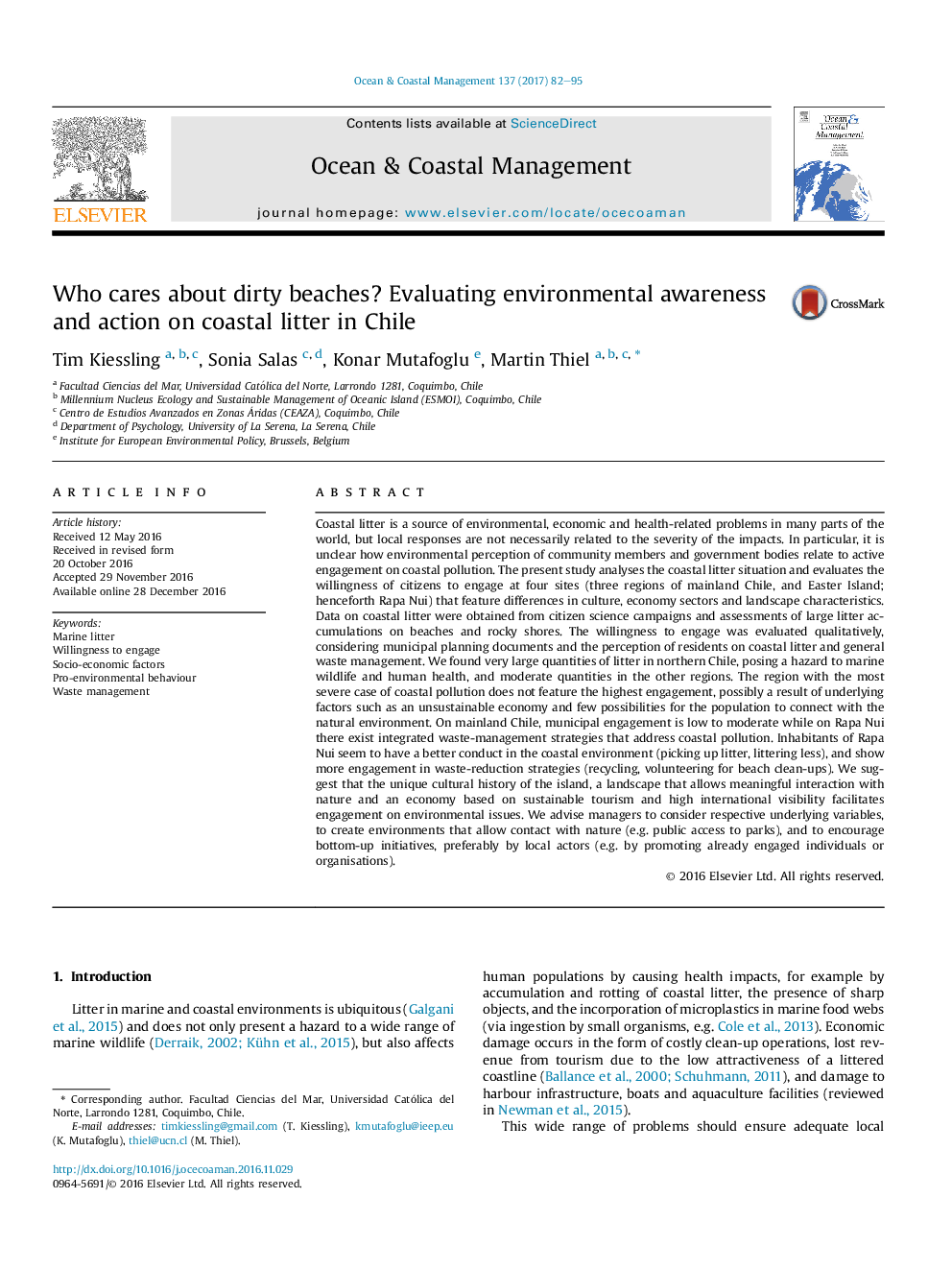| کد مقاله | کد نشریه | سال انتشار | مقاله انگلیسی | نسخه تمام متن |
|---|---|---|---|---|
| 5473997 | 1520492 | 2017 | 14 صفحه PDF | دانلود رایگان |
- The coastal litter situation and willingness of citizens to engage on coastal litter and improving waste management was evaluated in four regions of Chile.
- The region with the most severe coastal pollution does not feature the highest engagement.
- Inhabitants of Rapa Nui (Easter Island) have a better conduct in the coastal environment and the island features the most developed waste valorization infrastructure among the case study regions.
- We suggest that meaningful interaction with nature, sustainable economy sectors, the promotion of traditon-based value systems and external pressure (e.g. international tourism) facilitate environmental engagement.
Coastal litter is a source of environmental, economic and health-related problems in many parts of the world, but local responses are not necessarily related to the severity of the impacts. In particular, it is unclear how environmental perception of community members and government bodies relate to active engagement on coastal pollution. The present study analyses the coastal litter situation and evaluates the willingness of citizens to engage at four sites (three regions of mainland Chile, and Easter Island; henceforth Rapa Nui) that feature differences in culture, economy sectors and landscape characteristics. Data on coastal litter were obtained from citizen science campaigns and assessments of large litter accumulations on beaches and rocky shores. The willingness to engage was evaluated qualitatively, considering municipal planning documents and the perception of residents on coastal litter and general waste management. We found very large quantities of litter in northern Chile, posing a hazard to marine wildlife and human health, and moderate quantities in the other regions. The region with the most severe case of coastal pollution does not feature the highest engagement, possibly a result of underlying factors such as an unsustainable economy and few possibilities for the population to connect with the natural environment. On mainland Chile, municipal engagement is low to moderate while on Rapa Nui there exist integrated waste-management strategies that address coastal pollution. Inhabitants of Rapa Nui seem to have a better conduct in the coastal environment (picking up litter, littering less), and show more engagement in waste-reduction strategies (recycling, volunteering for beach clean-ups). We suggest that the unique cultural history of the island, a landscape that allows meaningful interaction with nature and an economy based on sustainable tourism and high international visibility facilitates engagement on environmental issues. We advise managers to consider respective underlying variables, to create environments that allow contact with nature (e.g. public access to parks), and to encourage bottom-up initiatives, preferably by local actors (e.g. by promoting already engaged individuals or organisations).
Journal: Ocean & Coastal Management - Volume 137, 1 March 2017, Pages 82-95
